The original layout of the first Philadelphia Rock Gym was truly an exercise in old-school design.
In the early days, as I have mentioned previously, many climbing gyms were built on shoestring budgets with whatever local labor was at hand and could swing a hammer- skilled or otherwise. This approach had its pros and cons. For one thing, it meant that certain features were far more common than others for reasons of cost and ease of build, among other things.
One of the most obvious examples of this was the prevalence of vertical walls in early climbing gyms. Vertical walls were, and still are, the cheapest and easiest walls to build, by a country mile. Almost anyone with basic construction experience could build one, which is just what they did. The second easiest thing to build is a floor, which, when you attach some plywood to the underside with a few T-nuts in it, becomes a horizontal roof. For many early climbing gyms, these broad features- vertical walls and horizontal roofs – were the most prevalent features by far. In some gyms, they made up 100% of the climbable surface.
The first version of the original Philadelphia Rock Gym was a typical example of this style. If we hop in the Wayback machine and tour the PRG in 1994, the first thing you might notice is that it was half the size. With the kind of budgets early operators were working with, 7,000 square feet was a respectable size for a gym back then, and the thirty top-rope stations were more than enough for the traffic of the day.
As you stepped through the front door, you entered the top-rope and lead climbing area, split right down the middle by the boardwalk to the front desk, just like it is today. That, though, is where the similarities end. The boardwalk is one of a small number of features that have remained unchanged since the original gym opened thirty years ago. If you can guess the other few things before the end of the article, give yourself a gold star!
The original walls on the right side (as you entered the front door) were a textbook example of old-school design. Nearly every feature was vertical, broken up at various intervals with the occasional three-foot roof feature (just like the bunks, for the trad climbers among us), and the even more occasional ‘steep’ angled feature—or slab. Right angles adorned every corner—inside corners, aretes, and roof transitions—all reminiscent of climbing areas in the Mid-Atlantic and Northeast regions.
The ethos at the time was to try to bring the outside indoors, both in terms of the features of the walls and the style of route setting. The early route setting was done by the owners and us locals who grew up on the slippery red shale of Ralph Stover State Park and cut our lead climbing teeth plugging gear at places like the Gunks, the White Mountains, Seneca Rocks, and the Adirondacks, or clipping bolts at Safe Harbor, the New, and the Henry Avenue Bridge.
What all of these climbing areas had in common were hard, vertical (or nearly vertical) crimp routes with long reaches, high feet, and tricky sequences. Given that these were our projects, they heavily influenced the style of the walls and the climbing on them. Adding to the challenge, more than three-quarters of the local climbing scene was male and over 5′ 10″, making it a wonder anyone else ever showed up at early gyms to climb!
The left side wall was similar to the right in flavor but had a couple of additional features to set it apart and create some variety. First, just next to the front door was the Double-Overhang, one of the only “angled” walls in the whole gym at the time. The Double Overhang consisted of two rope stations over a wall that started vertical for ten feet, then tipped back to a 10-degree overhang in the middle, and finally to a 30-degree overhang at the top. For those of you keeping score, the Double Overhang still exists in the present-day PRG Oaks, though the original plywood has been replaced. The two vertical walls on either side of it are also part of the original construction. The Double was where we set the bulk of the hardest routes in the gym – the 5.12s!
But the most dramatic feature of PRG mark 1, the place where we set the true test pieces (and occasionally cheated Death), was the Roof.
Located just to the right of the Double overhangs – where the slab sits today- was a massive horizontal roof feature, almost fifteen feet deep and sixteen feet wide and fully bolted. Modeled off the Puppy Chow roof in the New River Gorge, the Roof was where we practiced our upside-down skills, preparing bodies and minds for the, at the time, next level of sport climbs popping up in areas like the Red River Gorge, the Obed and, yes, the New River. We used it to simulate infamous roof problems like Kansas City in the Gunks, the Madness cave in the Red, and Tierney at the Obed in Tennessee, working those simulations to death on the off-chance that we would get the perfect weather window, time off and enough gas money to buzz down there for a long weekend and snag a send. And, on occasion, it even worked!
Located just to the right of the Double overhangs – where the slab sits today – was a massive horizontal roof feature, almost fifteen feet deep and sixteen feet wide, fully bolted. Modeled off the Puppy Chow roof in the New River Gorge, this imposing structure became known as the Roof. It was here that we honed our upside-down skills, preparing our bodies and minds for the next level of sport climbs emerging in areas like the Red River Gorge, the Obed, and the New River. The Roof served as a simulation ground for infamous roof problems like Kansas City in the Gunks, the Madness cave in the Red, and Tierney at the Obed in Tennessee. We worked tirelessly on these simulations, hoping for the perfect weather window, time off, and enough gas money to embark on a long weekend trip and snag a send. And, on occasion, it even worked!
But the crown jewel of the Roof was a smallish lead feature called the Diamond. A small piece of this feature still exists today as a random slabby triangle at the top of the slab on the left. In its original form, this triangle formed the very top of the Diamond. Below it, two long triangles dropped under the left side of the Roof, meeting at a point a few feet above the floor. Together, they formed a gently overhanging blunt arete that ran twenty feet up to a corner of the Roof capped by another, shorter pair of triangles. These triangles transitioned to a slightly less than vertical exit to the final vertical headwall.
This feature- loosely modeled after some of the features at the newly developed Red River Gorge- was the longest section of uninterrupted steep climbing in the gym that was leadable. That was where we set the dreaded 5.13s.
The next feature to the right of the Roof was the Cave, an afterthought that, much to everyone’s surprise, became one of the most popular features of the wall. So popular, in fact, that at the urging of many customers over the years, it has remained essentially unchanged since the Oaks gym opened. Even today, it is one of the most requested features for birthday parties and new climbers looking to ‘get horizontal’ without the additional stress of looking down at the ground from two stories up.
At this point, some of you may be asking, “What about the bouldering? What crazy old-school woodie did they slap up into the rest of the gym?” Before we get to that, though, it’s important to understand that a common theme among early climbing gyms was that your flooring surface was not considered a significant ‘safety’ feature.
So, like nearly all commercial facilities at the time, the PRG mark 1 used… pea gravel. That’s right, the standard landing surface in the industry in 1994 for top-rope, lead, and bouldering was stone. The same sort of gravel you might find around your patio or what passed for a lawn at the New Jersey shore. There was nothing underneath it but bare concrete and a little bit of dust.
It might not be the most comforting thing to land on, but it had the benefit of being easy to obtain and maintain—only needing to be raked every few weeks to even out the low points—and it was extremely cheap. The thinking was that we had ropes to keep you from hitting the ground. Any extra protection was a bonus; you didn’t get any better outside, after all. And this was fine, as it went.
Until, of course, you built a bouldering wall. Landing flat on your back from eight feet in the air onto a bed of grey, rounded stones was not the most comforting or comfortable experience, though it was great motivation not to fall, it must be said. The fact was, in 1994, bouldering was not yet considered a valid discipline of its own in the climbing world, though that would change rapidly in just a few years. Climbers bouldered to improve their power and increase their odds of sending a hard route. It was something you did when you couldn’t find a partner or after a roped session to milk the last little bit of juice from your forearms before heading to the bar to hydrate.
Oh, how times have changed!
In the original gym, however, the bouldering options were incredibly limited. Just beyond the top-ropes, where the 45° wall now stands, was one of two actual bouldering features in the entire facility. It was nine feet tall, about sixteen feet long with a single transition – a wide inside corner to a blunt arete three feet away- and a single fifteen-degree angle the entire way. Between this feature and the other at the far end of the gym, there were 100 feet of dead vertical, nine-foot-high ‘traverse wall,’ interrupted only by a twelve-foot-wide slab wall with four ropes for teaching new climbers. Yes, out of nearly 1000 square feet of bouldering in this state-of-the-art, brand-new facility, 800 feet, nearly 80%, was rendered dead vertical.
People used it to do 300-foot endurance ‘laps’ around the gym, though it wasn’t particularly effective. Given how well that worked (which was not at all), I have often wondered why. Thankfully, at the end of the traverse wall, there was one more interesting feature to break up the monotony. And if you have been paying close attention to this story, you may be able to guess what it was. Need a hint?
It was a roof! To be specific, it was the Bouldering Cave. Today, the entire original bouldering wall from PRG Oaks is gone, replaced piece by piece over the years with features that have more range and value. But, in 1994, at the very back of the gym – where the teaching slab is today- was a feature that held the same importance to bouldering as the Roof and the Diamond did to sport climbing. It was where we set the hardest problems, often topping out at V6 or V7, on the steepest walls to boost our power and progress on the challenging routes outside.
This humble feature was tiny by modern standards, consisting of a single, eight-foot wide 60-degree steep section that stretched twelve feet from the kicker to a fully horizontal roof that was eight feet deep and twelve feet long (though you had to take a hard right at the roof to climb those twelve feet). For nearly a year, this was where the locals camped for late-night bouldering, beer, and bullshit sessions.
We crimped until our fingers were raw and our tendons near to snapping on the steep, then swung from mushroom-shaped Petrogrips in the roof like monkeys in the trees or kindergarteners on the jungle gym until we could barely lift our drinks.
It was a special kind of bliss. Unfortunately, the Bouldering Cave was also frequently used for a more typical kind of bliss by teenagers on the weekend, away from the prying eyes of parents and staff. So, despite being the site of the original Midnight Burn (a story for another time), it was torn down after only two years to make way for better things. There is little room for sentiment when progress comes to the gym.
That concludes the climbing portion of our tour in the Wayback Machine. But, for those of you interested in the full history of the evolution of Oaks, there are a few final tidbits of trivia that may pique your interest or even give you a giggle.
In the proud tradition of entrepreneurs throughout history, after they founded the first PRG, Matt and Greg had basically no money. And, in the proud tradition of dirtbagging climbers throughout history, they found creative and unorthodox solutions to that problem.
For example, the current back office made a lovely bedroom for Matt. For Greg, the current storeroom was far from adequate and conveniently closer to the bathroom – which at that time, was located in the utility closet by the front desk, right next to the chemical shower. That shower marked the very first ‘improvement’ to Oaks after the gym was open. With the help of a few locals, the original ‘shower’ was replaced with a more functional one within a few months. Its remnants still remain today, just a curbed plastic sheet with a drain, serving as a spot for holds and mops to dry. It’s situated right next to where the dishwasher used to be, in fact. And yes, we used to wash holds in one of those. No, it didn’t really work.
The ‘employees only’ room at the back of the gym, as some of you may know, used to be the Party Room before the new side of Oaks opened in 2017. But as most of you don’t know, it was truly a party room before that. In its first year, it served as the TV room for the original owners, a place for tall tales and sweat during the hot summer months – the PRG didn’t get air-conditioning until 2003. We discussed our next climbing trips in that room, planned improvements to the gym, engaged in heated arguments over letter grades, and even watched O.J. Simpson fleeing police custody. It took a lot of Clorox and Lysol to prepare for the first birthday party.
Now, for the die-hard completionists among you, let’s delve into the remaining differences at PRG Oaks. In no particular order, here they are:
The Shop was half the size but fully enclosed right next to the front desk. It was made up of some random furniture and two glass-fronted display cases scavenged from the discarded remains of the indoor Flea Market, along with the cash register and, inexplicably, a working fax machine.
The two bathrooms at the front weren’t original either; those were put in during the second year after the discovery of Birthday Parties, which finally gave Matt and Greg the money to move out. The first parties had to eat their cake and sing their festive songs where the back of the current shop now stands. Thankfully, they had the room as the changing rooms (affectionately referred to as Robehenge back in the day) were not there, though the campus board that was originally attached to the concrete wall crowded them a bit.
And, of course, the new side was formerly Ed Arnold’s Classic Cars, founded by the world-famous race car driver Ed Arnold, also the founder of Ed Arnold’s indoor Go-karts. Unfortunately, Ed was a far better race car driver than a businessman. So Classic Cars is gone, and he hasn’t owned a Go Kart in twenty-five years.
Still, he once purchased and restored the black Cadillac that transported a dead Elvis Presley. And for the memory of a mannequin in sunglasses dressed loosely as the King and propped up in the back seat of a 1962 Cadillac with its head leaning against the window, the spitting image of every rock star at the end of a bender. We thank you, Ed.
And for the memories of that first year of our very own climbing gym – the posing, the bragging, the adolescent dares, the stupid human tricks, the drama, the parties, the characters, the community… The opportunity to be a part of something a bit bigger than ourselves, the purpose and pleasure of working toward the same goal… And, of course, the fun… I thank you, Matt and Greg. It was one of the weirdest, coolest, genuinely interesting years of my life.
Here’s to another 30 years of stories!
All material is reprinted with the permission of the author. Copyright 2022 David H. Rowland. All rights reserved.




